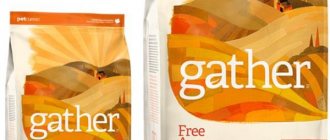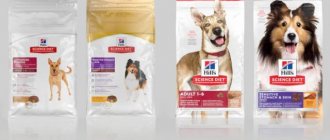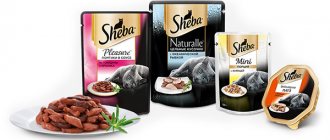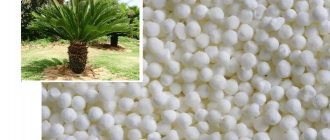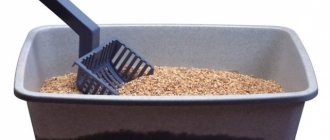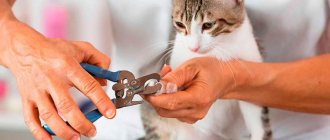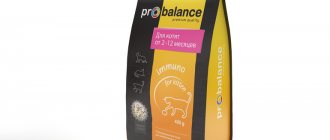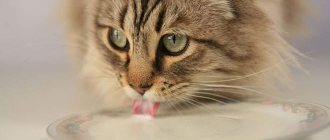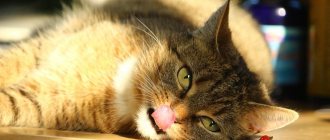It is believed that all cats love milk. Should cats be given milk? Felinologists agreed that this should not be done; some representatives of the cat family do not have stomachs that produce enzymes for digesting lactose.
This is not true for all cats. The process is similar to an allergic reaction - citrus/strawberry/egg allergy in humans. One cat drinks milk with great pleasure, while the other will suffer diarrhea and suffering. Before you pour a milk drink for your cat, do some more research on the topic.
Milk in the diet of kittens
At least until 2 months, the kitten's main food product is mother's milk. It contains all the elements necessary for intensive growth and development and provides immune protection for the baby’s body.
If for some reason the kitten is left without mother's milk, the only complete source of replacement can only be special dry formulas sold in specialized pet salons. For example, Beaphar Kitty-Milk or Royal Canin Babycat Milk.
In the absence of special mother's milk substitutes, you can give the kitten infant formula or goat's milk for a short time. Whole cow's milk is not a complete and correct substitute and can be harmful to the baby.
This drink was originally created by nature for feeding calves. Despite the fact that it contains many useful substances and amino acids, it also contains components that are not intended for the cat's body.
Cow's milk proteins are very poorly absorbed by kittens. In addition, store-bought milk is obtained from cows whose diet is based on industrial feed, so the content of pesticides and antibiotics in the drink will be very high.
Much higher than the permissible standards for the cat's body in cow's milk and casein with lactose. They are also difficult for small kittens to digest.
Goat's milk, although not such a complete replacement as mother's milk, is much closer to it in composition. It is only advisable to dilute it with boiled water to reduce fat content.
When purchasing a special cat's mother's milk substitute at a pet store, you should consider:
- Manufacturer's brand. It is advisable to choose only those that have good reviews from veterinarians and cat nutritionists.
- Breed of the kitten. For example, Maine Coons, Pixie Bobs, and some other varieties need more high-calorie nutrition.
- Fat content of the mixture. Ideally, it should not exceed 9%.
If the kitten is bottle-fed, after a month you can slowly introduce meat purees into its menu; by 2-3 months, milk should no longer be the main dish in the baby’s daily diet.
And by six months, this drink must be completely excluded from the kittens’ diet or replaced with another product, for example, kefir, since as cats grow older they lose the ability to absorb milk sugar.
Sample menu after poisoning
The first day after food poisoning is better not to eat anything. If you feel very hungry, you can drink a little rice water. It is better to use brown rice for cooking.
After the unpleasant symptoms disappear, you can eat little by little. To improve the functioning of the digestive system, adults follow a diet for 5-10 days after poisoning.
Let us give examples of therapeutic dietary nutrition used in the treatment of diseases of the digestive tract.
| Diet No. 1A Calorie content: 1900–2000 kcal | Diet No. 2 Calorie content: 2800–3000 kcal | |
| First breakfast | — steam omelet or soft-boiled eggs; - warm low-fat milk. | - oatmeal or semolina porridge; - low-fat cheese; - weak tea. |
| Lunch | - milk. | - rosehip decoction. |
| Dinner | — pureed oatmeal soup, steamed chicken fillet; - fruit jelly. | - vegetable or meat broth; — steamed cutlets from lean meat; - mashed potatoes; - dried fruits compote. |
| Afternoon snack | - milk cream; - rosehip decoction. | - rosehip decoction. |
| Dinner | - liquid rice porridge (crushed); - milk. | - Steamed fish; - rice pudding; - tea or cranberry juice. |
| Drink at night | - milk. | - kefir or yogurt. |
Recommended dishes also include vegetable soups, boiled porridges, except pearl barley and millet, baked meat puddings, and cottage cheese casseroles. It is advisable to grind porridges and soups with a blender. This way they will be better absorbed.
To prepare meat dishes, it is advisable to use veal, beef, turkey or chicken. Steamed meatballs, meat pate or casserole will be completely dietary dishes. You are allowed to eat fish balls and chicken breast. You can make puddings from berries and fruits; bananas and baked apples are also allowed.
As additional support for the body, you can use sorbents, for example, Fitomucil Sorbent Forte. Enterosorbent will remove harmful substances, cope with pathogenic microorganisms, and restore normal intestinal microflora. The drug contains five types of live probiotic bacteria, as well as psyllium and inulin.
Types of milk in a cat's diet
The most popular types of milk that owners can offer their pets are cow's and goat's.
Their comparative composition is given in the table.
| Index | Cow's milk | Goat milk |
| Fat content | 2,2 – 6,8 % | Average 4.5% |
| Vitamins | A; B1; B2; B6; B12; D; C. | A, D, E, C, B1, B2, B4, B5, B6, B12, H, PP, nicotinic acid. |
| Microelements | Calcium, potassium, phosphorus. | Calcium, potassium, phosphorus, magnesium, sodium, molybdenum. |
| Lactose content | High. | Minimal. |
| Calorie content, ml/100 g | 60 | 68 |
Despite the fact that goat milk has a high fat content, its composition is basically similar to cat and human breast milk, it contains more proteins, micro- and macroelements, and higher calorie content. At the same time, there is practically no alpha lipase, which causes the formation of fatty deposits.
Therefore, goat's milk is much preferable in pet nutrition than cow's milk:
- easier to digest;
- contains many lacto- and bifidobacteria, which improve digestion and gastrointestinal function;
- hypoallergenic, as it contains no proteins;
- minimal lactose content;
- lots of vitamins and minerals.
Is milk acceptable in the diet of an adult cat - benefit or harm?
Veterinarians and nutritionists advise excluding milk from a cat’s diet from 6 months, and some experts suggest doing this earlier - as early as 4 months.
This is due to the fact that this product contains a special element in huge concentration - milk sugar. Its breakdown is carried out in the cat's body under the influence of the enzyme lactose.
The body of any mammal produces quite a lot of it in infancy and childhood and produces practically none at all in adulthood.
The consequence of feeding an adult cat milk, especially cow's milk, is a malfunction of the gastrointestinal tract, the occurrence of dyspeptic symptoms - nausea, vomiting, diarrhea.
This theory is confirmed by almost all experts - product rejection occurs in most individuals, but there are exceptions to the rule.
Some adult and even elderly pets happily drink milk without any consequences for the proper functioning of the body. This is due to the individual characteristics of specific individuals. This means that it is in their body that a lot of lactose is still produced and the breakdown of milk sugars occurs successfully.
All adult animals like the taste of milk, but numerous studies have confirmed that it does not bring any benefit to the pet. Some cats, even in the absence of dyspeptic symptoms, may develop an allergic reaction when feeding them milk.
Thus, despite the assertion of some scientists about the indispensability of cow's milk in the diet of cats, most experts recognize this product as harmful and unacceptable in the diet of adult pets:
- The high calorie content of milk can lead to imbalance in the body and ultimately lead to obesity.
- The high content of casein and lactose does not allow the product to be completely absorbed.
- An extremely high concentration of elements that are unacceptable in the diet of an adult animal contributes to the development of allergies.
- Intolerance to milk sugars by the cat's body leads to indigestion, flatulence, bloating, indigestion, chronic diarrhea and dehydration.
General information
Problems and questions do not arise in cats with milk as long as the young body produces the lactase enzyme, which breaks down the sugar from milk - lactose. As cats age, the enzyme becomes less and less and, as a result, it may completely disappear from the body, since the process of evolution does not provide for long-term feeding of offspring with milk.
As an adult, a non-domestic cat no longer has contact with milk and feels great without consuming it. A domestic cat has a chance to be fed milk and dairy products. This is where the question arises: can cats have milk even if the animal has already grown up?
Whole milk contains many beneficial components:
- Calcium
- Fatty acid
- Lactose
- Lecithin
- Cholesterol
- Vitamin A and D
- Phosphorus
All of these are useful substances, but due to the peculiarities of adult digestion, all of them may not be absorbed by the cat’s stomach, since the lack of lactase in milk causes diarrhea before it is digested.
Compatibility of milk with dry food
Another question that concerns owners of animals that consume milk is its compatibility with dry formulas.
Ready-made industrial food is a completely balanced product containing all the necessary elements, and there is no need for your cat to drink it with milk.
With the simultaneous intake of milk and dry formulas, an excess of nutrients and microelements appears in the cat’s body, which settle in the form of deposits on the walls of the bladder and kidneys, leading to the development of urolithiasis. The liver also suffers, since this protective barrier of the body is filled with toxins. This product is especially dangerous for castrated cats and sterilized females.
Pets should drink food only with clean running water.
Cow's milk, even if replaced with goat's milk, which is less dangerous for cats, is an element of natural nutrition, and mixing it with feeding dry industrial food, according to veterinarians, is unacceptable.
Cats and Dairy Fact 5: Cats need water first.
No matter how well cow's milk is tolerated, your cat will always need plenty of fresh, clean water.
According to the Moscow University College of Veterinary Medicine website, water helps your cat:
- Regulate body temperature
- Digest food
- Waste disposal
- Lubricate the fabric
- And allows salt and other electrolytes to pass through the body
To encourage your cat to drink water, try placing several bowls of varying depths around the house. According to Case, many cats enjoy running water. If you have one, you can find cat fountains at most pet stores.
Replacing milk with fermented milk products
If the cat is a dairy lover and is on a natural diet, it is better to gradually replace this product with a fermented milk menu.
Kefir, fermented baked milk, natural yoghurts not only do not contain milk sugars, but are also enriched with lactic acid bacteria, which have a beneficial effect on digestion and the functioning of the entire gastrointestinal system of the cat as a whole.
There is no lactose in these products; it is what is converted into lactic acid during fermentation.
Using various types of fermented milk products, you can regulate and eliminate intestinal problems in your pet. So, for example, in case of regular constipation, fresh kefir will help, and in case of diarrhea, “old” (two-day old) kefir.
You can offer your cat milk without or with low lactose content, but usually such products do not delight your pet.
When choosing kefir, or better yet biokefir or fermented baked milk, you should pay attention to the fat content in them. It shouldn't be high. That is why you should not often offer your cat high-calorie cottage cheese or cheese, much less sour cream.
It is unacceptable to feed your pet sweet yoghurts and curds containing a lot of sucrose. Sugar is another harmful and dangerous human product for cats.
Reviews from veterinarians
Thus, the opinion of most veterinarians boils down to the following:
- It is not forbidden to feed your pets milk if it is normally absorbed by his body. But you should not give them this product in melted form (high fat content), cream and condensed milk.
- It is recommended to cook porridge in water, even semolina.
- The rest of the cats can be given low-fat and unsweetened fermented milk products, again, provided that they accept it normally.
But these products are under no circumstances mixed with ready-made industrial feed.
With a natural diet, the amount of dairy or fermented milk products per day should not exceed 20-30% of the daily diet, because a cat is primarily a predator. And her diet should be dominated by animal proteins, specifically meat. This is the best treat for any pet.
1111
